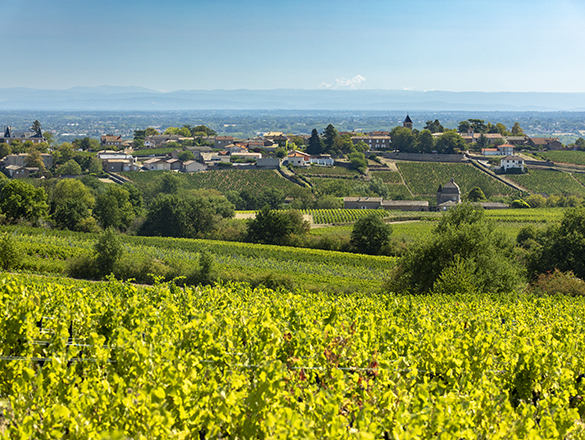
The vineyards of Bourgogne produce some great wines with a historical and international reputation. However, the region is not simply limited to its iconic appellations. In addition to its Village Premier Cru and Grand Cru AOCs, it also produces a range of wonderful Régionale and Village appellations to explore.
You will also find a full list of the Bourgogne’s Climats and lieux-dits on this page.
Check out the complete list of the 84 Bourgogne appellations.
However, your exploration has only just begun. Bourgogne wines have never before offered such high quality. Besides our range of internationally celebrated wines, try some of our lesser-known appellations where there are lots of surprises in store.
And for a fun way to find out more about the wines on offer, try out our “Which Bourgogne wine is right for me?” quiz, or check out Bourgogne Maps to take an interactive tour of the region.
Regional Appellation
VIGNOBLE DU MÂCONNAIS
31 juillet 1937
White: Chardonnay
Area under vine: 56 hectares
Note: Average over three years 2016-2018
An additional geographical denomination that is part of the Régionale Mâcon appellation in the Mâconnais. According to the 2005 specifications rules, the name Mâcon-Chaintré refers to white wines grown within a defined area in the villages of Chaintré, Chânes, and Crêches-sur-Saône.

The fruit of a very coherent geographical terroir, Mâcon-Chaintré wines have a southerly accent, reflected in their dazzling yellow gold color. The first impression on the nose is delicately expressive, with citrus notes of lemon, grapefruit, and other tropical fruits. Next come delicate notes of white blossom like almond and white rose that bring a certain aromatic complexity. With body, length, and balance, these are fatty, rounded wines, that gradually grow more taut on the finish.

With its sunny aromatic character and smoothness on the tongue, this wine makes a natural pairing with all kinds of goat cheeses, such as the traditional AOC Mâconnais or its neighboring Charolais for a terroir-themed aperitif. Follow with grilled Bresse chicken supremes or mixed fried fish from the Saône. This white wine will also bring out the best in local freshwater fish dishes, such as Dombes carp with white wine, or pôchouse from Verdun-sur-le-Doubs.
Serving temperatures: 10-11°C as an aperitif, 11-12°C with food

The vines of Mâcon-Chaintré grow at the most southerly tip of the Mâconnais hills, in line with the Mâcon-Vinzelles appellation. To the south is the Saint-Véran AOC in the village of Chânes, while the D169 road marks the separation between Pouilly-Fuissé to the west and Mâcon-Chaintré to the east.
While the village of Chaintré is organized around its church, which sits at 274 meters above sea level, the chateau, which has been radically altered since the 14th century, was constructed at the bottom of the slope at 194 meters above sea level. Its successive owners, rich traders and titled royal officers, attest to the importance of the Lyon bourgeoisie in boosting the quality of the vines and expanding the wine trade. Their initiatives found a more formal framework in the 20th century thanks to local boy, Charles Perraton. He became involved in unionism in the wine trade in 1919 and contributed through his work for the Comité National des Appellations d’Origine in 1935 to the establishment of specifications for the future AOCs. A memorial plaque to Charles Perraton can be found near the co-operative cellars in Chaintré.

Benefiting from the great uniformity of the slope at Loché-Vinzelles, the vines of Mâcon-Chaintré grow on the gentle east-facing slope at between 180 and 218 meters above sea level. The climate here, with its southerly influences, creates some extremely beneficial conditions for the growth cycle of the vines.
The vines grown on a landscape carved out during the Quaternary Period from around 2.5 million years ago, with clay mixed with pebbly scree from the erosion of the Bajocian hillside, formed 170 million years ago. The soil is rich in alluvial deposits and is deeper than at the top of the slope.
